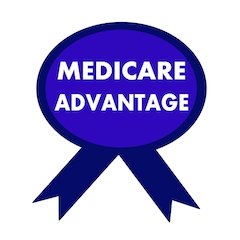ARLINGTON, Va. – One in three Americans aged 65+ is economically insecure—lacking the resources needed to meet basic food, housing, and medical needs. While there are numerous of public benefits programs that can help, the stigma surrounding these programs often is a key reason that eligible seniors do not enroll.
In late June, the National Council on Aging (NCOA) released “An End to Stigma: Challenging the Stigmatization of Public Assistance Among Older Adults and People with Disabilities,” to better define the challenges stigma poses and provide recommendations for overcoming it.
The report is based on in-depth interviews with 40 local counselors who work each day to find and enroll eligible seniors into benefits. It examines the stigma surrounding five core public benefits programs, including the:
• Supplemental Nutrition Assistance Program (SNAP)
• Medicare Savings Programs (MSPs)
• Medicare Part D Low-Income Subsidy (Extra Help)
• Medicaid
• Low-Income Home Energy Assistance Program (LIHEAP)
“The value of these benefits can exceed more than $6,000 annually, which for many low-income older adults would raise their income to more than twice the Federal Poverty Level,” said Leslie Fried, Senior Director of the NCOA Center for Benefits Access. “It’s critical that we can illustrate how and why stigma stops people from considering these programs and share ways to overcome it. These programs can help struggling older adults pay for basic needs, reduce debt, and maintain their health and independence.
According to the survey, not all benefits programs carry the same level of stigma. Counselors reported that universal benefits like Social Security and Medicare are popular and face less stigma. SNAP and Medicaid, however, often have stigma attached to them, which prevents eligible individuals from applying.
The report states that benefits stigma manifests itself in two ways:
• Internal stigma arises from negative perceptions or connotations about oneself when deciding to learn about, apply for, and participate in benefits programs. Shame and embarrassment about participation in the program are the most common manifestations of internal stigma.
• External stigma arises from experiences or perceptions about the benefits themselves. Administrative burdens, such as long applications or difficult-to-reach social service agencies, and misconceptions about the value of a given benefit may lead eligible people to decide the reward is not worth the cost.
Overcoming benefits stigma takes a coordinated effort. For benefits counselors, the report recommends that they:
• Challenge the narrative of “deserving” and “undeserving” to dispel notions that a person is “accepting a handout.”
• Focus on the structure of the program to demonstrate that other seniors are also struggling and that applying for assistance is not a personal failing.
• Correct misconceptions about benefits by explaining exactly how they work.
• Provide person-centered benefits enrollment assistance to screen clients for all benefits available and help them apply.
• Demonstrate the value of a benefit to show how it can free up money for rising costs, such as expensive medicine or health care.
“Counselors are extremely important in overcoming the stigma that threatens to keep older Americans from enrolling in these important programs, but a growing senior population, and shrinking budgets often limit these resources,” said Fried. “Just recently a Senate appropriations bill proposed eliminating funding for the State Health Insurance Assistance Program – or SHIP. The 15,000 local SHIP counselors provide assistance with Medicare issues and with enrolling in the Extra Help and Medicare Savings Programs, making them instrumental in dispelling the stigma around other important benefits programs.”
• See also: It’s time to move aging/longevity to the political main stage
Agency administrators and policymakers also have a role to play. The report recommends that they improve enrollment processes through existing waiver programs such as shorter applications, experiment with new processes, and improve data-sharing between agencies.
To read the full report, visit http://www.ncoa.org/stigma.
About NCOA: The National Council on Aging (NCOA) is a respected national leader and trusted partner to help people aged 60+ meet the challenges of aging. Our mission is to improve the lives of millions of older adults, especially those who are struggling. Through innovative community programs and services, online help, and advocacy, NCOA is partnering with nonprofit organizations, government, and business to improve the health and economic security of 10 million older adults by 2020. Learn more at www.ncoa.org and @NCOAging.













